What the heck is anchor text? Believe it or not, it has absolutely nothing to do with sailing, but it does have a lot to do with your SEO!
While it might seem simple, there’s a knack to getting anchor text just right. Here’s a comprehensive guide to understanding anchor text and how you can earn some big SEO wins with it.
We’ll start with the basics, and then guide you through some of the good and bad practices of incorporating anchor text into your content.
What Is Anchor Text?
So, if anchor text has nothing to do with holding a boat in place, what even is it?
Anchor text is the visible, clickable text of a hyperlink. The text is typically colored blue and underlined to easily identify it as containing a hyperlink. However, you can change the color to whatever you see fit to match your specific brand. For example, take a look at this snippet from a Bluleadz blog post:

The anchor text in this paragraph is “An effective content marketing strategy.” We know that this is anchor text because the text color has been changed to the Bluleadz brand orange.
If we click on this text, it will direct us to an article giving us more information about effective content marketing strategies.
Why Does Anchor Text Matter?
So, now that we know what it is, why does it matter?
It Improves the Reader Experience.
Anchor text contributes to a better user experience in a number of ways. For starters, linking to articles for further reading provides the reader with more information on the topic that they’re currently interested in. Readers find hyperlinks useful and appreciate the additional resources.
Secondly, providing hyperlinks via anchor text creates a smoother, more natural reader experience. Take a look at this example:
Hyperlink in a Sentence Without Anchor Text:
One of the best – and easiest – ways to promote your latest blog articles is to share links to your content across your social media sites. (Go to https://www.bluleadz.com/blog/4-key-elements-for-your-2016-social-media-marketing-strategy for more information about social media strategies.)
Hyperlink in a Sentence Using Anchor Text:
One of the best – and easiest – ways to promote your latest blog articles is to share links to your content across your social media sites.
So, which example is more reader friendly? The second one, right?
That’s because using anchor text builds the hyperlink directly into your content rather than creating annoying distractions that chop up the sentence.
It Can Boost SEO Rankings.
Using good anchor text practices can make a positive impact on your SEO.
For starters, Google uses anchor text to understand what your page is about and identify which keywords it should be ranking for.
When a website provides anchor text linking to a page on your website, this is called a backlink. Search engines go hunting for backlinks, so if you can get some big hitters, it can really make a difference.
Ideally, you want websites that already have high SEO rankings to include backlinks to your page because their SEO ranking then gets passed on to your page.
You can also include internal links in your posts, which will direct the reader toward other relevant articles on your website that they may find useful. This promotes traffic through your site, and thus also contributes to SEO.
How to Create Anchor Text: 5 Easy Steps
Creating anchor text in your articles and webpages is a relatively easy and painless process. There’s generally a universal icon that’s used throughout any content platform to attach a hyperlink to anchor text. It looks like this:
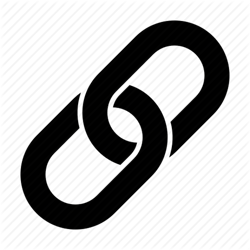
Here at Bluleadz, we use HubSpot as our CMS, so we’ll show you a step-by-step guide of how to create anchor text in a blog post you’re editing in the HubSpot content management system.
However, these steps are pretty universal throughout most content creation systems – be it email, another management system, or website host – so you can use this step-by-step process pretty much anywhere on the web.
Step 1: Highlight the Text You Want to Act as the Anchor Text.
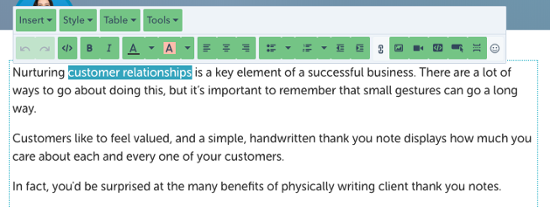
Step 2: Click on the Hyperlink Icon or Press Command+K on Your Keyboard.
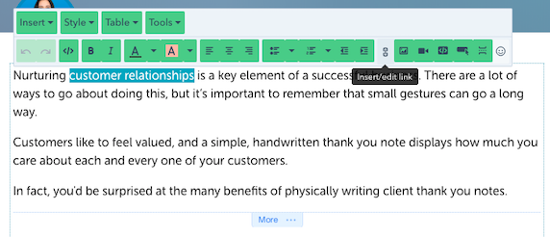
Step 3: Add the URL You Want the Anchor Text to Link To.
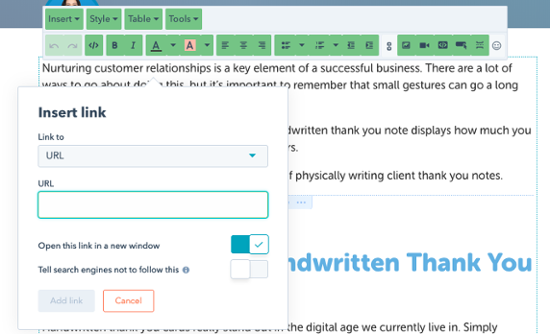
You can also use keywords to search through your own content to add internal links.
To do this, switch the "link to" section to "one of your pages."
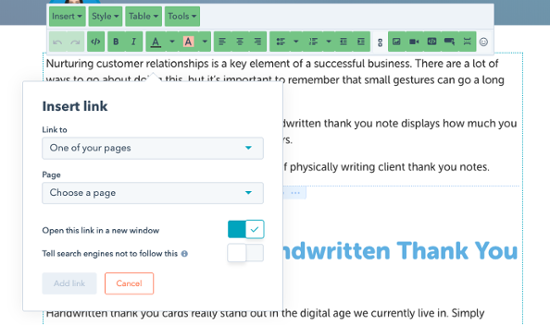
Next, go to "choose a page" and type in a keyword to search for relevant content to link back to.
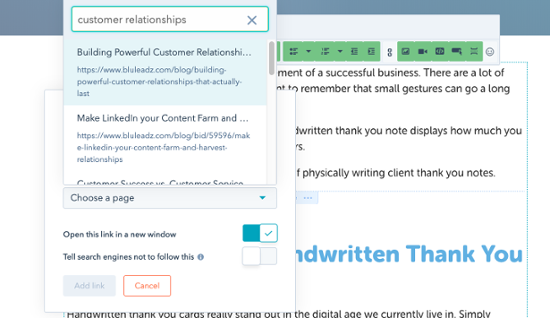
Step 4 (Optional): Select 'Open This Link in a New Window' If You Would Like the Hyperlink to Load in a New Tab on a Web Browser.
The benefit of having the linked webpage open in a new window comes down to user experience. If you're reading a blog post and want to dive deeper on a linked webpage, you likely want to finish reading the post you're on.
By making the linked webpage open in a new window, you're making it easier for the reader to further explore that piece of content after they finish reading the post they're currently on. Plus, you can keep readers on your pages longer, increasing important engagement metrics (like time on page).
Step 5: Click “Add Link.”
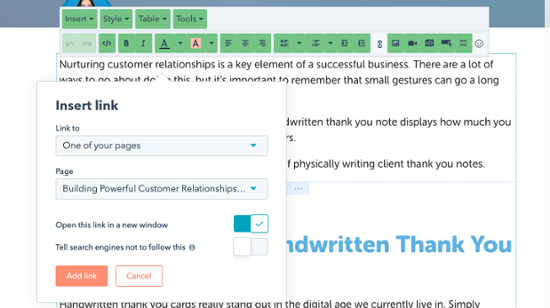
You’re done! Notice how the anchor text we selected turned orange to signify that it contains a hyperlink.
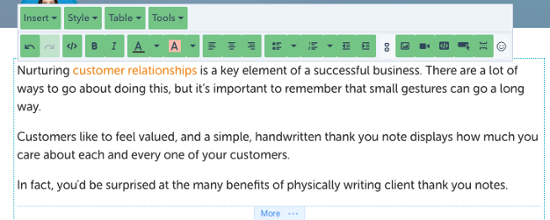
6 Types of Anchor Text You Should Know
Let’s say that we want to provide anchor text that links back to a Bluleadz blog post entitled, “12 Ways to Include Customer Service Throughout Your Organization.” Here's a few of the ways we could do it:
Exact Match
Exact match anchor text contains a keyword that reflects the article or page the text links to.
For example, the primary keyword of the above blog post is “customer service.” Exact match anchor text would simply use the keyword “customer service” to link to the article.
Partial Match
Partial match anchor text contains a variation of the keyword of the page that's being linked to. Let’s build upon our example from above.
Using the phrase “the importance of customer service” as anchor text for the blog post would be partial match because it is a variation of the primary keyword “customer service.”
Branded
This one is pretty simple – you use a brand name as anchor text. For example, say you have the sentence, “Check out Bluleadz’s article on customer service.” Here, “Bluleadz” would be used as the anchor text because it’s the brand/company name.
Naked
Naked anchor text is barely anchor text at all – it’s when you provide a bare URL link to click. So in this case, we would provide the full URL to the blog post: https://www.bluleadz.com/blog/how-to-improve-customer-service
Generic
Generic anchor text is pretty common. This includes using call-to-action words or phrases like “click here,” “check it out,” or “click for more info.”
Image
You can also connect hyperlinks to images! When you do this, clicking on the image will bring you to the target page. But the image’s alt text is what actually stands as the anchor text that’s tracked through search engines.
Common Anchor Text Mistakes to Avoid
Believe it or not, there is a right way and a wrong way to include anchor text in your content. It can be easy to slip up and make some common mistakes when it comes to anchor text, and this can end up hurting your SEO.
Here’s a few common mistakes to avoid when you’re working with anchor text:
Be Careful of Overstuffing.
When it comes to anchor text, the more isn’t always the merrier.
You might think that stuffing your page full of as much anchor text as possible is a good idea, but it can have serious repercussions. It’s an easy mistake to make, but doing so equates to keyword stuffing, and Google will punish you for it.
Trim as much fluff as possible, and only include anchor text when you actually have a relevant article that you think would be beneficial to the reader.
Say No to Spam!
This might seem obvious, but make sure the anchor text you’re providing is actually relevant to the webpage it’s linking back to. You don’t want to have “the best Nike gear” linking back to the Adidas website.
Additionally, various anchor text phrases throughout your page shouldn’t contain the same hyperlink – each anchor text should link back to a different target page.
Don't Repeat Anchor Text in the Same Article.
Google is constantly hunting those who try to dupe the system and unnaturally boost their SEO. If your article or webpage’s inbound links are composed of the same keyword anchor text over and over again, this will set off alarm bells.
For example, if you’ve got a page about yummy dog biscuits, don’t use the keyword “dog biscuits” as anchor text over and over again. While you might think it would help you rank better for the keyword “dog biscuits,” it would actually be more detrimental to your page.
Excessive keyword density is a signifier of unnatural anchor text use, and your SEO will get a big old slap on the wrist from Google for it.
Anchor Text Best Practices for SEO
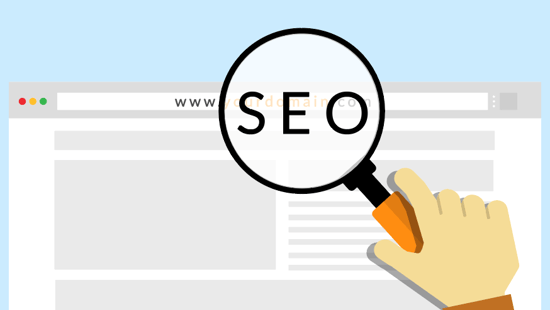
Finally, what we’ve all been waiting for. Anchors aweigh! Let’s learn some best practices about anchor text to help you improve your SEO!
Make It Clear, Concise, and Enticing.
You definitely don’t want your anchor text to be a whole sentence long. Ideally, it shouldn’t be more than a few words, and it should convey the linked page in a concise but accurate way.
Additionally, you also want the anchor text to be enticing enough to encourage the reader to click the link.
Consider these elements when determining the best anchor text to use for a specific hyperlink.
Keep it Relevant.
This one ties back into the issue of spamming – it’s important to make sure your anchor text is relevant to the page you’re linking back to.
Also, make sure that the target page is relevant to the topic of your own page! If you have a webpage about the importance of customer service, you don’t want to have anchor text that links back to a page about Chinese food or how to adopt a puppy.
Those are both very interesting topics, but they have nothing to do with your topic! The additional resources you provide should build upon the topic you’re discussing.
Variation is Good!
While exact match anchor text is great, it’s a good idea to balance it out with partial match text as well!
Using phrase variations of the primary keyword will help you to provide a more targeted idea of what the backlink is actually going to be about. This will create a more direct and clear path of information for your reader and thus enhance the user experience.
Now That You Know The Ins and Outs of Anchor Text…
Get out there and start using it! Quality anchor text can help you build a pathway of useful information for your readers, and it structures credibility around your website. Just remember to keep these best practice tips in mind when you start including it in your content.


Claire Cortese
I am a content creator here at Bluleadz. In my free time, I enjoy hugging dogs, watching reruns of The Office, and getting sunburnt at the beach.